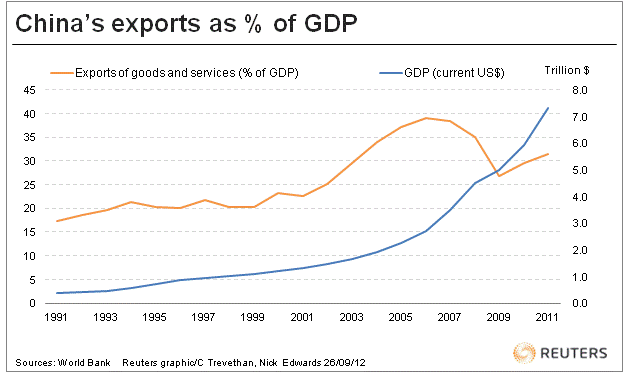Household Spending And China's Economic Future: A Cautious Outlook

Table of Contents
The Current State of Household Spending in China
Rising Disposable Incomes, but Uneven Distribution
Growth in disposable incomes has undeniably fueled a surge in consumer spending in China. This rising middle class represents a significant market for both domestic and international brands. However, the distribution of this wealth is far from uniform. Income inequality remains a significant challenge, with a considerable gap between urban and rural incomes. According to the National Bureau of Statistics of China, the Gini coefficient, a measure of income inequality, while declining slightly in recent years, still indicates a substantial level of disparity. This uneven distribution impacts overall consumption patterns, limiting the potential for broad-based consumer-driven growth.
- Income growth concentrated in urban areas, particularly in coastal provinces.
- The rural-urban income gap remains significant, hindering consumption in rural areas.
- A growing middle class exists, but a significant portion of the population still has limited disposable income for discretionary spending.
Shifting Consumer Preferences and Spending Habits
Chinese consumers are becoming increasingly discerning. Their preferences are shifting towards higher-quality goods and services, reflecting a growing sophistication and aspiration for premium brands. E-commerce has profoundly reshaped spending habits, with online retail giants like Alibaba and JD.com dominating the market. This digital transformation has led to greater convenience and access to a wider range of products. Moreover, experiences, such as travel and leisure activities, are gaining popularity, indicating a shift from material possessions to experiential consumption.
- Rising demand for premium products, including luxury goods and international brands.
- Increased online shopping penetration, with e-commerce playing a crucial role in driving consumption.
- Growing interest in travel and leisure activities, demonstrating a shift towards experiential spending.
Factors Inhibiting Increased Household Spending
High Debt Levels and Concerns about Financial Stability
High household debt levels pose a significant threat to future spending. Rapid growth in mortgage debt and consumer loans has raised concerns about potential financial risks and their impact on consumer confidence. The government is implementing measures to curb excessive borrowing, but the impact on consumer spending remains to be seen. A potential slowdown in credit growth could severely constrain future consumption.
- Rising mortgage debt, particularly in major cities, impacting disposable income.
- Consumer loan growth concerns, potentially leading to tighter lending conditions.
- Government regulations to curb excessive borrowing, aiming to mitigate financial risks.
Geopolitical Uncertainty and Economic Slowdown
Geopolitical uncertainty and the global economic slowdown are casting a shadow over consumer sentiment in China. Trade tensions and other external factors create uncertainty about future economic prospects, leading to cautious spending behavior. The slowing growth rate of the Chinese economy, coupled with these external factors, is directly impacting household spending, leading to a more subdued outlook for consumption.
- Trade war impacts on consumer confidence, leading to delayed purchases and reduced spending.
- Global economic slowdown effect on export-oriented industries, impacting employment and incomes.
- Uncertainty regarding future economic prospects, resulting in a more conservative approach to spending.
Government Policies and Their Impact on Household Spending
Stimulus Measures and Infrastructure Investments
The Chinese government has implemented various stimulus measures and infrastructure investments to boost economic growth and, consequently, consumer spending. The effectiveness of these measures in stimulating consumption varies depending on their design and implementation. While infrastructure projects create jobs and increase income levels in certain sectors, their long-term sustainability and overall impact on household spending in China are subjects of ongoing debate.
- Effectiveness of previous stimulus packages varies; some have proven more impactful than others.
- Impact of infrastructure projects on employment is significant in the short term but needs sustained investment.
- Long-term fiscal sustainability concerns exist regarding continued reliance on large-scale stimulus packages.
Social Welfare Programs and Income Support
Social welfare programs and income support initiatives play a vital role in improving household incomes and reducing inequality. Expanding social security coverage, providing unemployment benefits, and offering targeted assistance to low-income families can significantly boost consumer spending and contribute to a more inclusive economic model. However, the effectiveness and sustainability of these programs require careful planning and long-term commitment.
- Expansion of social security coverage, aiming to provide a safety net for a wider population.
- Unemployment benefits and other safety nets providing crucial support during economic downturns.
- Targeted assistance for low-income families, aiding in poverty reduction and boosting consumption at the grassroots level.
Conclusion
While rising disposable incomes and evolving consumer preferences offer a positive outlook for household spending in China, several factors temper this optimism. High debt levels, geopolitical uncertainties, and the overall economic slowdown pose significant challenges. The effectiveness of government policies in stimulating consumption and addressing income inequality will be crucial in determining China's economic future. Further analysis of household spending in China and the implementation of effective policies to promote sustainable consumption will be essential for ensuring long-term economic growth. Therefore, continued monitoring of key indicators related to household spending in China is paramount.

Featured Posts
-
 Ven Man Bi Mat Kho Bau 13 Trieu Usd Chuyen Di Tim Kho Bau Cua Rau Den
May 28, 2025
Ven Man Bi Mat Kho Bau 13 Trieu Usd Chuyen Di Tim Kho Bau Cua Rau Den
May 28, 2025 -
 Kaupallinen Yhteistyoe Lainaa Korkeiden Korkojen Aikaan Vertaile Ja Loeydae Edullisempi Laina
May 28, 2025
Kaupallinen Yhteistyoe Lainaa Korkeiden Korkojen Aikaan Vertaile Ja Loeydae Edullisempi Laina
May 28, 2025 -
 Prakiraan Cuaca Jawa Tengah 23 April 2024 Waspada Hujan Lebat
May 28, 2025
Prakiraan Cuaca Jawa Tengah 23 April 2024 Waspada Hujan Lebat
May 28, 2025 -
 Waspada Hujan Prakiraan Cuaca Bandung Dan Jawa Barat 26 Maret
May 28, 2025
Waspada Hujan Prakiraan Cuaca Bandung Dan Jawa Barat 26 Maret
May 28, 2025 -
 Investigation Underway After Truck Explosion Propane Leak Suspected
May 28, 2025
Investigation Underway After Truck Explosion Propane Leak Suspected
May 28, 2025
Latest Posts
-
 13 Hya Astytanya Mkhtt Astemary Jdyd Yhdd Aljghrafya Alflstynyt
May 30, 2025
13 Hya Astytanya Mkhtt Astemary Jdyd Yhdd Aljghrafya Alflstynyt
May 30, 2025 -
 Glastonbury 2025 Ticket Resale Dates Times And Prices
May 30, 2025
Glastonbury 2025 Ticket Resale Dates Times And Prices
May 30, 2025 -
 Glastonbury Festival 2024 Fans Devastated By Notable Line Up Absence
May 30, 2025
Glastonbury Festival 2024 Fans Devastated By Notable Line Up Absence
May 30, 2025 -
 Glastonbury Ticket Resale 30 Minute Sell Out Explained
May 30, 2025
Glastonbury Ticket Resale 30 Minute Sell Out Explained
May 30, 2025 -
 Alastytan W Mqawmth Thlyl Lsyast Dm 13 Hya Astytanya Fy Flstyn
May 30, 2025
Alastytan W Mqawmth Thlyl Lsyast Dm 13 Hya Astytanya Fy Flstyn
May 30, 2025
